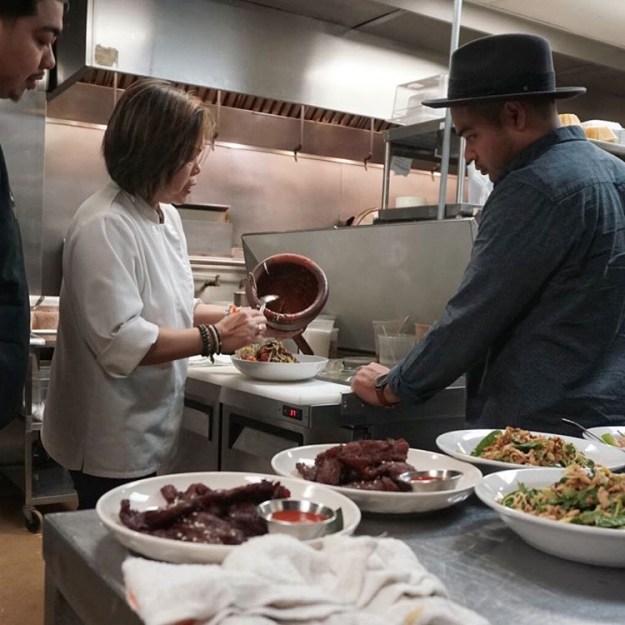I’ve been cooking my whole life since I was little—cooking is my passion. When I first started my culinary career, I opened a Thai restaurant—Bangkok Golden in Falls Church, Virginia. That is typically how the Lao are able to present ourselves: through other cultures. You may go to a Thai restaurant and never know it is owned by Laotians because Thai food is easier to sell. But I said I don’t want to do just Thai food, I want to stick to my roots, to make the food that I grew up eating. So I decided to go ahead and push Lao food out there, and I was motivated when I realized that people were actually enjoying and appreciating it.
This encouraged me to take another risk and open Thip Khao. Before opening, I discussed with family, friends, and staff, why don’t we push Lao food more? Let’s make Thip Khao serve exclusively Lao food. This gave me not only one, but two places—besides my own home—to share Lao cuisine. Then I created the Lao Food Movement with the hope of preserving and promoting our little-known cuisine. The Movement is my effort to educate those who are interested, by connecting people with information about the flavors, recipes, and ingredients that make Lao food unique. To do this, I am using social media networks—encouraging people to share Lao food experiences via hashtags, among other things—and my own site.


Why is it important to share Lao cuisine? It is very easy to let a food culture disappear, to die out. In any food culture it can happen, especially a culture like in Laos which has an oral tradition—there aren’t a lot of Lao cookbooks out there! To help prevent this from happening I said to myself, I’m just gonna do it, make traditional Lao food. Otherwise, it’ll just disappear. There are other chefs in the U.S. out there who are doing the same thing, too. People appreciate this—we’ll have people come into the restaurant and say, “Wow, I like the smell in here.” They will stop me, or my son Bobby (who is also a chef), to tell us they like that we stay true to ourselves, and honest to our Lao way of cooking.
But it is important, even in Laos, to keep pushing people to stick to our roots, to not take short-cuts. I consult with chefs in Laos to help them preserve the food and the flavor profile, which can get lost in tourist spots. We are known for eating funky food, often with a very strong smell and flavor; we use a lot of padaek, which is a fermented fish sauce. But traveling through the country, I noticed right away that in a lot of restaurants, there’s something missing, and I realized that they were replacing padaek with something else. The flavors were being toned-down.
I asked a chef in Laos about it this summer and he said, “We have to tone it down because it’s too funky for the tourists.” I encourage people not to take these shortcuts, to stay true to ourselves and our cuisine. Not only do I want to spread knowledge about the food I grew up eating and cooking, I want to ensure that Lao food in Laos stays true to its roots. When people come to the country, they should get a taste of what our food is really like—not some watered-down version.

Right now—given that Laos is garnering more international attention these days, and palates and people are more receptive to different cuisines than ever—is the perfect time to concentrate on the movement. People know Filipino food, they know Ethiopian food, so I’m hoping that Lao food is getting to that point.
Originally, I created the Lao Food Movement as a non-profit organization, but all the paperwork has been a challenge. Because of this, I am currently funding it from my personal accounts or through partnerships, such as the restaurant consulting I do in Laos, or my consultation on the menu for the cafe at the country’s first botanical garden—Pha Tad Ke—in Luang Prabang. Here in the United States, I met with Donny Darkoo from Ma Der Food Co in Texas, and Manila Southammavong from New York, and we discussed different aspects of the Movement, including the possibility of a small Lao food festival. I have visited other [restaurant owners] around the country and in Southeast Asia. Hopefully soon, I will connect with people from South America and Europe. Engaging with all of these wonderful people has uplifted my spirit and inspired me to continue. The movement is influenced by the way that Lao food is eaten—family-style—which brings people together as they eat from the same plates with their hands; what better way to enjoy and preserve Lao food than by sharing it with others?